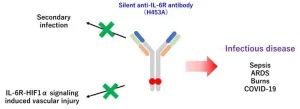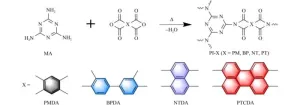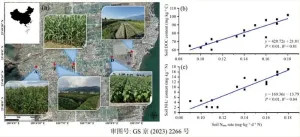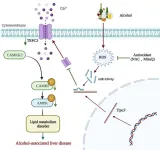(Press-News.org)
When a person has one or more blocked arteries, providers may choose to conduct a minimally invasive procedure known as percutaneous coronary intervention, or PCI.
By inflating a balloon and potentially placing a stent, blood can flow more freely from the heart.
Despite carrying less risk than open surgery, stenting and balloon angioplasty can result in complications like bleeding and kidney injury.
Researchers at Michigan Medicine developed an AI-driven algorithm that accurately predicts death and complications after PCI — which could emerge as a tool for clinicians as they determine treatment for blocked heart arteries.
The results are published in European Heart Journal.
“The risks for patients undergoing percutaneous coronary intervention vary greatly depending on the individual patient, and both patients and clinicians have historically both over and underestimated the harms associated with PCI,” said lead David E. Hamilton, M.D., a cardiology-critical care fellow at Michigan Medicine.
“Precise risk prediction is critical to treatment selection and the shared decision-making process. Our tool can recognize a wide array of outcomes after PCI and can be used by care providers and patients together to decide the best course of treatment.”
While other risk stratification tools have been created to identify risk after PCI, researcher say, many have modest accuracy and were made without involving a key party: patients.
The Michigan Medicine team collected data from all adult patients who underwent PCI between April 2018 and the end of 2021 using the Blue Cross Blue Shield of Michigan Cardiovascular Consortium, or BMC2, registry.
The consortium is comprised of hospitals across the state of Michigan that use data they collect to inform quality projects, and improve care and patient outcomes.
Researchers used that data — including more than 20 pre-procedural characteristics, such as age, blood pressure and total cholesterol — to create a risk prediction model with the machine learning software “XGBoost”.
The AI-driven model showed high levels of accuracy at predicting death, major bleeding events and the need for blood transfusion. It outperformed other models that used the same pre-procedural characteristics.
“We combined the predictive model with patient feedback from the PCI Patient Advisory Council to transform machine learning into this patient-centered, individualized risk prediction tool,” said senior author Hitinder Gurm, MBBS, interim chief medical officer at U-M Health.
“In the age of widespread smartphones and electronic medical records, this computerized risk score could be integrated into electronic health systems and made easy to use at the bedside. It would not only help relay complex information to the provider quickly, but it could also be used to enhance patient education on the risks related to PCI.”
The innovative technology has been harnessed into a computer and phone application to allow for free and widespread use.
Jeremy Albright Ph.D., Milan Seth, Devraj Sukul M.Sc., M.D., all of Michigan Medicine, Ian Painter Ph.D., of Washington State Department of Health and Foundations for Health Care Quality, Charles Maynard Ph.D., of Foundations for Health Care Quality and University of Washington, and Ravi S. Hira M.D., of University of Washington and Pulse Heart Institute and Multicare Health System.
Support for BMC2 is provided by Blue Cross and Blue Shield of Michigan and Blue Care Network as part of the BCBSM Value Partnerships program. Although Blue Cross Blue Shield of Michigan and BMC2 work collaboratively, the opinions, beliefs and viewpoints expressed by the author do not necessarily reflect the opinions, beliefs, and viewpoints of BCBSM or any of its employees.
Paper cited: “Merging Machine Learning and Patient Preference: Patient-Centered Tool for Predicting Risk of Percutaneous Coronary Intervention,” European Heart Journal. DOI: 10.1093/eurheartj/ehad836
END
A new analysis of trial data on pregnant smokers, led by researchers at Queen Mary University of London, finds that the regular use of nicotine replacement products during pregnancy is not associated with adverse pregnancy events or poor pregnancy outcomes.
The PREP 2 study used data collected from over 1100 pregnant smokers attending 23 hospitals in England and 1 stop-smoking service in Scotland to compare pregnancy outcomes in women who did or did not use nicotine in the form of e-cigarettes (EC) or nicotine patches ...
The pioneering research of Dr Yiliang Ding investigating the structure and function of RNA in living cells has been recognised with a major award.
Yiliang a group leader at the John Innes Centre, is among nine recipients of the 2024 Blavatnik Awards for Young Scientists in the UK, announced today by the Blavatnik Family Foundation and The New York Academy of Sciences.
The awards recognise research that is transforming medicine, technology, and our understanding of the world across three categories: Chemical Sciences, Physical Sciences & Engineering, and ...
Researchers at the University of Basel have built a quantum memory element based on atoms in a tiny glass cell. In the future, such quantum memories could be mass-produced on a wafer.
It is hard to imagine our lives without networks such as the internet or mobile phone networks. In the future, similar networks are planned for quantum technologies that will enable the tap-proof transmission of messages using quantum cryptography and make it possible to connect quantum computers to each other.
Like their conventional counterparts, such quantum networks require memory elements in which information can be temporarily stored ...
Osaka, Japan – Cytokines are chemical messengers that help the body get rid of invading bacteria and viruses, and control inflammation. The body carefully balances cytokines because they help keep the immune system healthy. However, this balance is upset if the immune system overreacts. A serious infection or a severe burn can unleash a cytokine storm in the body. During the storm—also called cytokine release syndrome (CRS)—the body produces too many cytokines, leading to life-threatening inflammation.
Interleukin-6 (IL-6) is a key cytokine in the storm because it helps to drive the inflammation that damages ...
Osaka, Japan – Have you ever wondered what wildlife animals do all day? Documentaries offer a glimpse into their lives, but animals under the watchful eye do not do anything interesting. The true essence of their behaviors remains elusive. Now, researchers from Japan have developed a camera that allows us to capture these behaviors.
In a study recently published in PNAS Nexus, researchers from Osaka University have created a small sensor-based data logger (called a bio-logger) that automatically detects and records video of infrequent behaviors in wild seabirds without supervision by researchers.
Infrequent behaviors, such as diving into the water for food, can ...
Canada's biggest companies often speak of their plans to be more sustainable, but a new study found corporations aren't fully backing up those commitments.
A team of University of Waterloo researchers concluded that corporate investing in communities fell despite an increase in companies committing to the United Nation's Sustainable Development Goals (SDGs) over the last decade.
Researchers investigated the community investment of Canada's 58 leading private-sector companies as a percentage of their net profit after tax to determine whether introducing SDGs created ...
Polyimide (PI) has emerged as a promising organic photocatalyst owing to its distinct advantages of high visible-light response, facile synthesis, molecularly tunable donor-acceptor structure, and excellent physicochemical stability. However, the synthesis of high-quality PI photoelectrode remains a challenge, and photoelectrochemical (PEC) water splitting for PI has been less studied.
A research group of Huiyan Zhang and Sheng Chu from Southeast University prepared PI films by a ...
A spider venom molecule being investigated by a University of Queensland team has met critical benchmarks towards becoming a treatment for heart attack and stroke.
Associate Professor Nathan Palpant and Professor Glenn King from UQ’s Institute for Molecular Bioscience have previously shown that the drug candidate Hi1a protects cells from the damage caused by heart attack and stroke.
Dr Palpant said a subsequent study has put the drug through a series of preclinical tests designed to mimic real-life treatment scenarios.
“These tests are a major step towards helping us understand how Hi1a would work ...
Soil nitrogen mineralization (Nmin) is a key process that converts organic N into mineral N that controls soil N availability to plants. However, regional assessments of soil Nmin in cropland and its affecting factors are lacking, especially in relation to variation in elevation. Nitrogen is an essential nutrient for crops but mineral N in soil, the only form that can be absorbed and used by crops, represents only about 1% of total soil N. Although N fertilization is commonly a necessary method for supplying N to crops, N release due to excess N fertilizer in the environment ...
Excessive alcohol intake is strongly associated with alcohol-associated liver disease (ALD) which accounts for 25% and 30% of deaths from cirrhosis and hepatocellular carcinoma. Impairment of Ca2+ influx and Ca2+-mediated signaling in ALD suggests that Ca2+ channels are important in ALD pathological progression.
TRPC (transient receptor potential cation channel protein C) is an evolutionarily conserved non-selective cation channel protein primarily located in the cell membrane with six transmembrane segments. So far four TRPC subfamilies have been identified, categorized into TRPC1, TRPC2, TRPC4/5, and TRPC3/6/7. Among them, TRPC3 is the most well-studied ...







